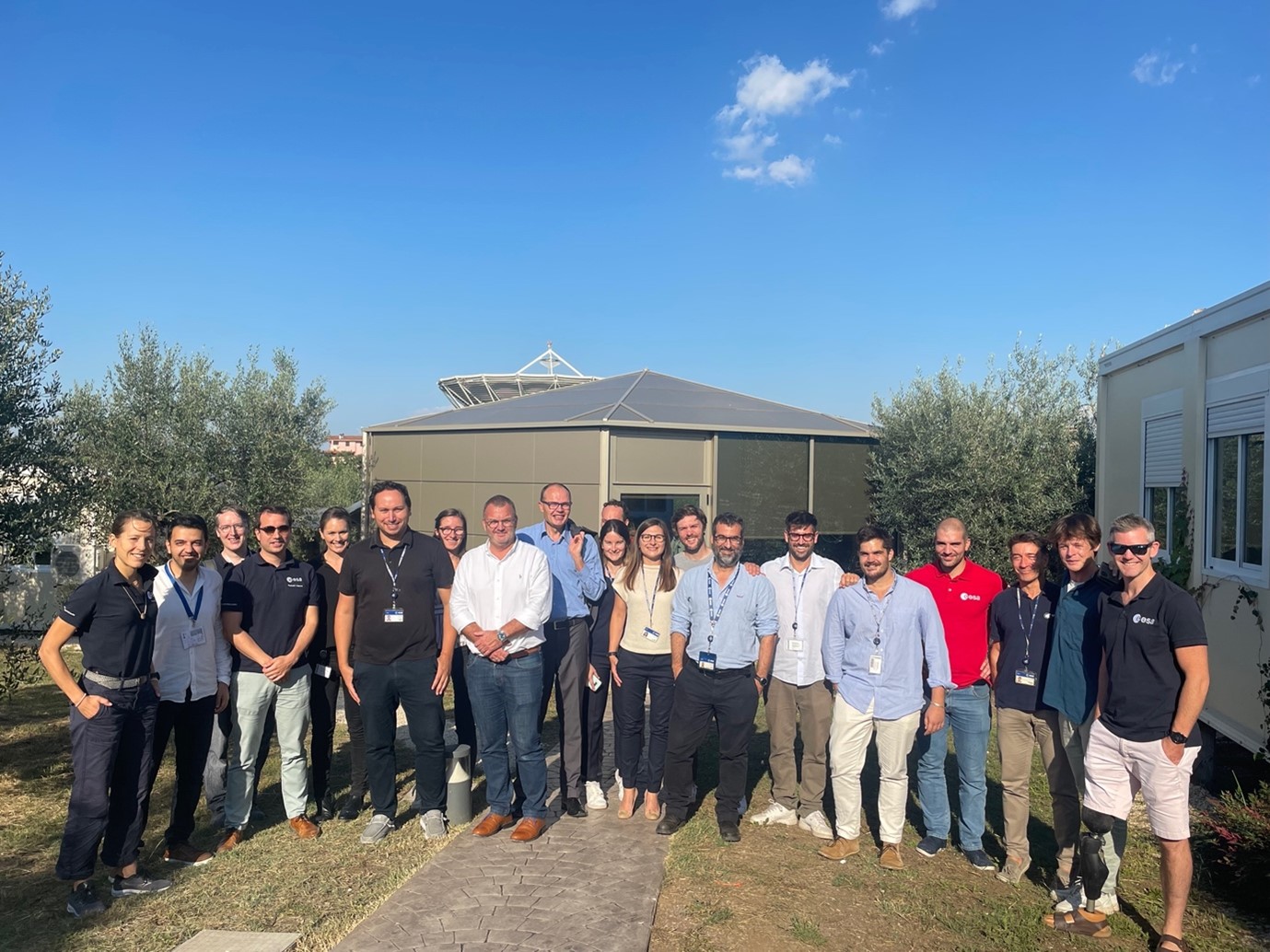
New ESA Astronauts visit the Science Hub
- Post by: Anca Anghelea
- November 16, 2023
During their visit to ESRIN on 29 September 2023, the new generation of ESA Astronauts met the Science Hub researchers and learned about the scientific activities in the domain of Earth System Science.
In 2022 the European Space Agency presented its selection of 11 new astronauts after a rigorous recruitment process with over 22 500 applicants. Astronauts are highly skilled and experienced professionals, uniquely trained to undertake long-duration missions on the International Space Station, perform experiments in microgravity, operate the Station’s systems, or serve as test subjects in life sciences experiments.
But their roles extend beyond scientific and technical endeavors: they actively participate in events, engage in space-related discussions, and contribute to social and traditional media and education initiatives, playing an important role as ambassadors for ESA and its programs.
For this ambassadorial role, a deep understanding of ESA’s diverse programmes, including the Earth Observation one, is crucial. Interactions with ESA scientists across the various sites are great occasions to foster this comprehensive understanding, and the visit to the Science Hub on 29 of September was no exception.
During their visit, the astronauts met and discussed with the research fellows and visiting scientists of the Science Hub, gaining insights into how Earth Observation contributes to a better understanding of our planet and how it serves a wide range of scientific applications, from measuring ocean currents to detecting and monitoring extreme storms, or unveiling new complex processes in remote regions such as the Antarctic. The astronauts also learned about the role of the Science Hub and the ESA Science Clusters in developing scientific cases for the Digital Twin Earth and how the Science Hub fosters Open Science and innovation across its activities.

It is through engagements such as this that astronauts gain further insights into the various ESA programs, enhancing their ability to articulate the significance and benefits of space exploration and space-based assets to diverse audiences.

